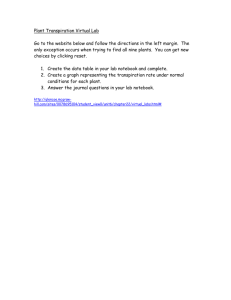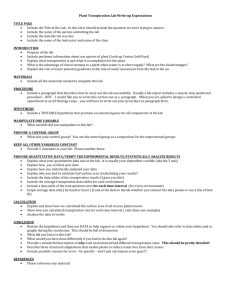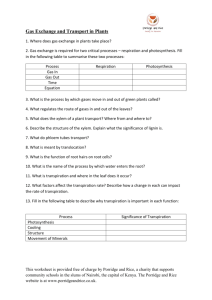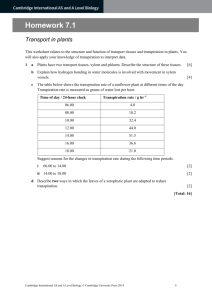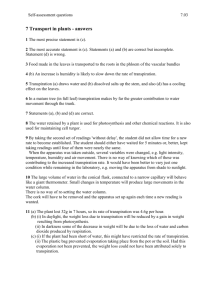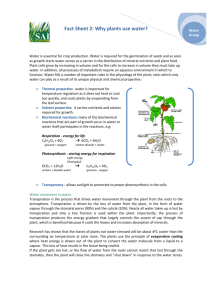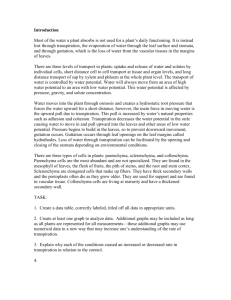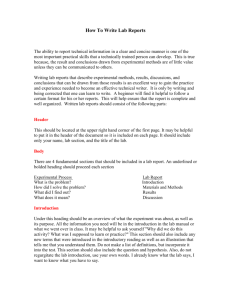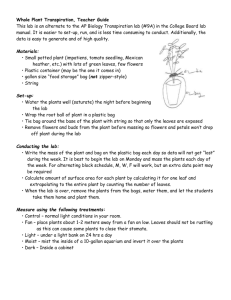Transpiration Lab: Plant Water Movement & Experiment Design
advertisement
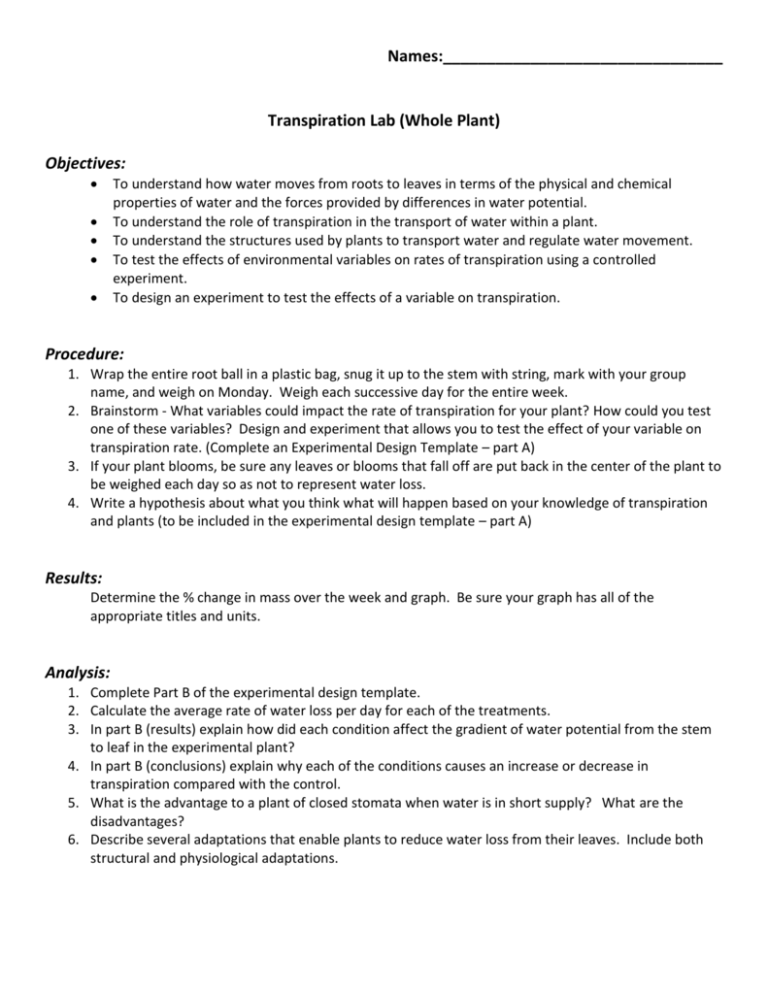
Names:________________________________ Transpiration Lab (Whole Plant) Objectives: To understand how water moves from roots to leaves in terms of the physical and chemical properties of water and the forces provided by differences in water potential. To understand the role of transpiration in the transport of water within a plant. To understand the structures used by plants to transport water and regulate water movement. To test the effects of environmental variables on rates of transpiration using a controlled experiment. To design an experiment to test the effects of a variable on transpiration. Procedure: 1. Wrap the entire root ball in a plastic bag, snug it up to the stem with string, mark with your group name, and weigh on Monday. Weigh each successive day for the entire week. 2. Brainstorm - What variables could impact the rate of transpiration for your plant? How could you test one of these variables? Design and experiment that allows you to test the effect of your variable on transpiration rate. (Complete an Experimental Design Template – part A) 3. If your plant blooms, be sure any leaves or blooms that fall off are put back in the center of the plant to be weighed each day so as not to represent water loss. 4. Write a hypothesis about what you think what will happen based on your knowledge of transpiration and plants (to be included in the experimental design template – part A) Results: Determine the % change in mass over the week and graph. Be sure your graph has all of the appropriate titles and units. Analysis: 1. Complete Part B of the experimental design template. 2. Calculate the average rate of water loss per day for each of the treatments. 3. In part B (results) explain how did each condition affect the gradient of water potential from the stem to leaf in the experimental plant? 4. In part B (conclusions) explain why each of the conditions causes an increase or decrease in transpiration compared with the control. 5. What is the advantage to a plant of closed stomata when water is in short supply? What are the disadvantages? 6. Describe several adaptations that enable plants to reduce water loss from their leaves. Include both structural and physiological adaptations. Experimental Design Template Part A: To be completed before beginning the investigation. What question will you explore? On the basis of your previous laboratory experience, background knowledge, and research, what is the hypothesis that you will test? What will be the INDEPENDENT VARIABLE? What will be the DEPENDENT VARIABLE? What equipment and materials will you need (list items and quantity)? What procedure (step-by-step) will you follow? What safety steps will you follow (equipment and procedures)? How will you collect data? How will you analyze data? Part B: To be completed during or after your investigation What changes or modifications have you to the investigation? Complete data table and graph of % change in mass. What results did you see in the experiment? Was the hypothesis accepted or rejected? What conclusions can you draw on the basis of data and analysis? What sources of error may have existed, and how might the experiment have been conducted differently? What additional questions arose from the experiment? Data/Observations Type Day 1 (first day) Day 2 weight weight Day 3 % change weight Graph of Change in Mass for Each Plant Response to Analysis questions 5 & 6 (page 1 of lab): Day 4 % change weight Day 5 % change weight % change
